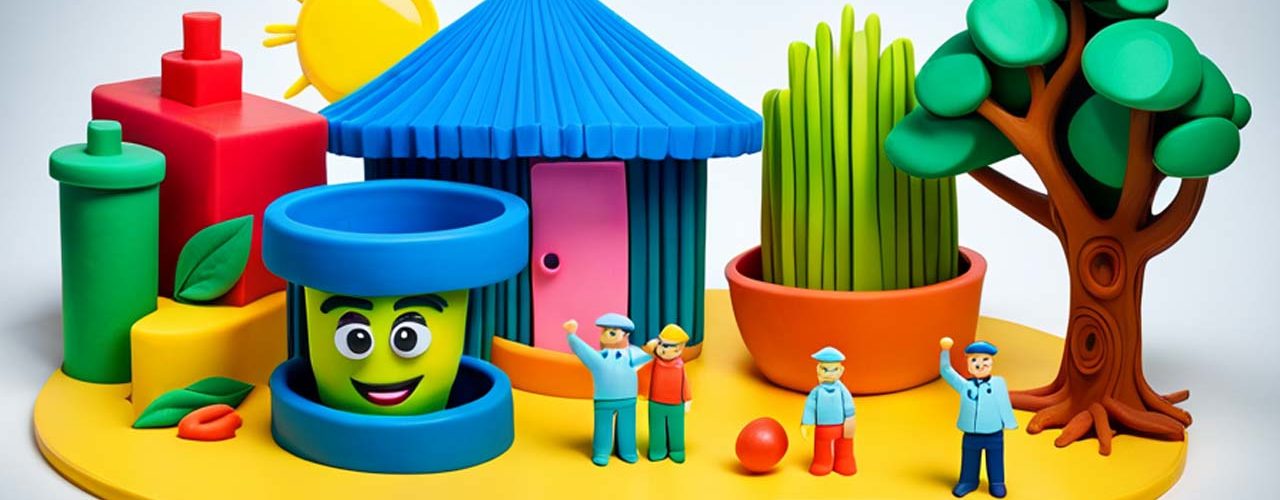7 Ways to Embrace Sustainable Living in Australia and Reduce Your Carbon Footprint

Sustainable living is all about making choices that have a positive impact on the environment, society, and our own well-being. In Australia, it’s more important than ever to adopt sustainable practices, considering the environmental impact of the Australian mining industry and the country’s efforts towards reducing greenhouse gas emissions. By making small changes to our daily routines, we can make a significant difference in our lives and the world around us. In this article, we’ll explore practical ways you can live more sustainably in Australia, from reducing energy consumption to supporting local and sustainable products.
1. Reduce Energy Consumption
Reducing energy consumption not only helps you save money on electricity bills, but it also lessens your carbon footprint. Here are three ways to cut down on your energy usage:
Switch to Energy-Efficient Appliances
One of the easiest ways to reduce energy consumption is by replacing old, inefficient appliances with energy-efficient appliances. These devices use less energy to perform the same tasks as their less efficient counterparts. As mentioned earlier, this can help you save money on your electricity bills while also benefiting the environment. Look for appliances with high energy star ratings and low standby power consumption.
Use Natural Light and Ventilation
Maximising natural light and ventilation in your home can significantly reduce your reliance on artificial lighting and air conditioning. Make the most of the sun’s rays by opening curtains and blinds during the day, and encourage air circulation by opening windows and doors when the weather permits. You can also consider installing skylights or solar tubes to bring more daylight into your home. For more tips on maximising energy efficiency in Australian homes, check out our previous article.
Install Solar Panels
Solar panels are a great way to generate clean, renewable energy and reduce your dependence on fossil fuels. By harnessing the power of the sun, you can significantly lower your electricity bills and contribute to a more sustainable future. Additionally, government rebates and incentives may be available to help offset the cost of installation.
2. Conserve Water and Use it Responsibly
Water is a precious resource, and conserving it is essential for the well-being of our planet and its inhabitants. Here are three ways to reduce water consumption in your daily life:
Fix Leaks and Drips
Leaky taps, pipes, and toilets can waste a significant amount of water over time. By promptly repairing any leaks or drips, you can save water and reduce your water bill. Regularly inspect your home for signs of water leaks and keep an eye on your water meter to detect any unusual usage.
Install Water-Efficient Appliances
Similar to energy-efficient appliances, water-efficient appliances and fixtures can help you conserve water and save money on your water bills. Look for products with a high Water Efficiency Labelling and Standards (WELS) rating, such as low-flow showerheads, dual-flush toilets, and water-efficient washing machines. For more water-saving tips, visit the Sydney Water website.
Use a Rainwater Tank
Installing a rainwater tank is an excellent way to collect and store rainwater for later use. This water can be used for watering plants, flushing toilets, and even washing clothes, reducing your reliance on mains water and helping to preserve Australia’s precious water resources.
3. Proper Waste Management
Waste reduction is a crucial aspect of sustainable living. By adopting a zero-waste lifestyle, you can minimise your environmental impact and contribute to a cleaner, healthier planet. Below are some of the waste management practices that you can employ:
Reduce, Reuse, and Recycle
The three Rs—reduce, reuse, and recycle—are essential principles of waste reduction. Start by reducing the amount of waste you generate by choosing products with minimal packaging and buying only what you need. Reuse items whenever possible, such as shopping bags, water bottles, and food containers. Finally, recycle materials like paper, plastic, glass, and aluminium to help conserve resources and reduce landfill waste.
Compost Food Scraps and Garden Waste
Composting is a natural process that turns organic waste, such as food scraps and garden waste, into nutrient-rich compost. This compost can be used as a natural fertiliser for your plants, helping to reduce the need for chemical fertilisers and improve soil health. Composting also helps reduce the amount of waste sent to landfill, where it would produce harmful greenhouse gases.
Avoid Single-Use Plastics
Single-use plastics, such as plastic bags, straws, and coffee cups, are a significant source of pollution and can take hundreds of years to break down in the environment. By choosing reusable alternatives, you can help reduce plastic waste and protect our oceans and wildlife from plastic pollution.
4. Choose Sustainable Transportation
The transportation sector is a major contributor to greenhouse gas emissions, and choosing sustainable transportation options is an important step towards reducing our carbon footprint. Listed below are some of the ways through which you can travel more sustainably:
Walk, Bike, or Use Public Transport
Active modes of transportation, such as walking and cycling, are not only good for the environment but also for your health. When longer distances are required, consider using public transport, which has a lower carbon footprint than driving a car. Combining these methods can significantly reduce your emissions and help create more sustainable cities.
Choose Electric or Hybrid Vehicles
If driving is unavoidable, consider investing in an electric or hybrid vehicle. These cars produce fewer emissions than conventional petrol or diesel vehicles, making them a more environmentally friendly choice. As electric vehicle infrastructure continues to improve in Australia, driving an electric or hybrid car will become increasingly convenient and accessible.
Carpool or Ride-Share
Sharing rides with friends, family, or colleagues can help reduce the number of cars on the road, leading to lower greenhouse gas emissions and less traffic congestion. Carpooling and ride-sharing services can be a convenient and cost-effective alternative to driving alone, making them a smart choice for sustainable transportation.
5. Support Local and Sustainable Products
By supporting local and sustainable products, you can reduce your environmental impact while also contributing to the local economy through the following ways:
Buy from Local Farmers and Producers
Purchasing food from local farmers and producers helps support small businesses and reduces the carbon footprint associated with transporting goods over long distances. Visit farmers’ markets, local shops, or farm gates to buy fresh, seasonal produce and support your local community.
Choose Organic and Fair-Trade Products
Organic and fair-trade products are produced using environmentally friendly and socially responsible practices. By choosing these products, you can support sustainable agriculture and fair wages for farmers and workers. Look for certified organic and fair-trade labels on products such as coffee, chocolate, and clothing.
Avoid Products with Excessive Packaging
Excessive packaging is a significant source of waste and contributes to our overall environmental impact. Choose products with minimal or recyclable packaging, or opt for package-free alternatives when possible. Bringing your own reusable bags, containers, and produce bags to the store can also help reduce packaging waste.
6. Grow Your Own Food
Growing your own food can be a rewarding and environmentally friendly way to reduce your carbon footprint by decreasing food miles. You can start by embracing the practices below:
Start a Vegetable Garden
Planting a vegetable garden is a great way to enjoy fresh, nutritious produce while reducing your reliance on commercially grown food. Choose vegetables that are suitable for your climate and soil conditions, and practice sustainable gardening methods such as crop rotation, companion planting, and organic pest control.
Grow Herbs and Fruit Trees
Herbs and fruit trees are a fantastic addition to any garden, providing fresh ingredients for your meals and reducing your need to purchase them from the store. Many herbs and fruit trees can be grown in pots, making them suitable for balconies or small outdoor spaces. Choose varieties that are well-suited to your local climate and conditions.
Use Natural Pest Control Methods
To maintain a healthy and productive garden without the use of harmful chemicals, consider using natural pest control methods. These can include introducing beneficial insects, such as ladybirds and lacewings, using barriers and traps, and planting pest-repellent plants. By avoiding synthetic pesticides, you can protect the health of your plants, soil, and local ecosystems.
7. Reduce Meat Consumption
Reducing meat consumption is an effective way to lower your environmental impact, as the production of meat is resource-intensive and a significant contributor to greenhouse gas emissions.
Choose Plant-Based Meals
Incorporating more plant-based meals into your diet is a simple and delicious way to reduce your meat consumption. There are countless vegetarian and vegan recipes available online that are both nutritious and satisfying. By choosing plant-based meals, you can help conserve resources and contribute to reducing greenhouse gas emissions in Australia.
Reduce Portion Sizes
Another way to reduce meat consumption is to decrease the portion sizes of meat in your meals. By reducing the amount of meat you eat and increasing your intake of vegetables, legumes, and whole grains, you can enjoy a more balanced and environmentally friendly diet.
Choose Sustainably-Raised Meat
If you do choose to eat meat, opt for sustainably-raised options whenever possible. Look for meat products that come from animals raised on pastures, without the use of antibiotics or hormones, and that are certified organic or free-range. These practices are generally better for the environment and animal welfare.
Conclusion
Sustainable living is not only essential for protecting our environment, but it can also lead to a healthier and more fulfilling lifestyle. By adopting the practical tips provided in this article, you can reduce your energy and water consumption, minimise waste, choose sustainable transportation options, support local and sustainable products, grow your own food, and reduce your meat consumption. Together, we can work towards a more sustainable future for Australia and our planet.
For more information on sustainable living and to learn more about the environmental impact of the Australian mining industry, visit www.ecosustainable.com.au. To find out how to save money on electricity bills while also maximizing energy efficiency in Australian homes, check out our other articles on energy conservation and efficiency.
Remember, every small step towards sustainable living makes a difference, so don’t be afraid to start implementing these changes in your daily life. As you become more conscious of your environmental impact, you’ll likely discover even more ways to live sustainably and protect our precious planet.



